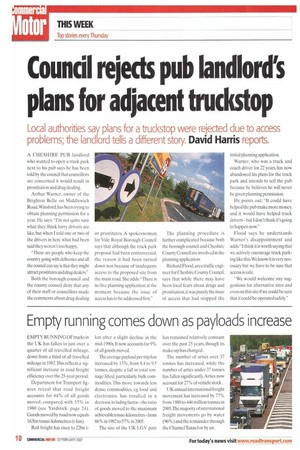Empty running comes down as payloads increase
Page 10

If you've noticed an error in this article please click here to report it so we can fix it.
EMPTY RUNNING OF trucks in the UK has fallen to just over a quarter of all travelled mileage, down from a third of all travelled mileage in 1982.This reflects a significant increase in road freight efficiency over the 25-year period.
Department for Transport figures reveal that road freight accounts for 64% of all goods moved, compared with 53% in 1980 (see Yardstick, page 24). Goods moved by road now equals 163bn tonne-kilometres (t-km).
Rail freight has risen to 22bn t km after a slight decline in the mid-1990s. It now accounts for 9% of all goods moved.
The average payload per trip has increased by 13%, from 8.4 to 9.5 tonnes, despite a fall in total tonnage lifted, particularly bulk commodities. This move towards less dense commodities, eg food and electronics, has resulted in a decrease in lading factor—the ratio of goods moved to the maximum achievable tonne-kilometres—from 66% in 1982 to 57% in 2005.
The size of the UK LGV pare has remained relatively constant over the past 25 years, though its make-up has changed.
The number of artics over 37 tonnes has increased, while the number of artics under 37 tonnes has fallen significantly. Artics now account for 27% of vehicle stock.
UK annual international freight movement has increased by 77% from 1980 to 446 million tonnes in 2005.The majority of international freight movements go by water (96%) and the remainder through the Channel Tunnel or by air.
























































































































































































